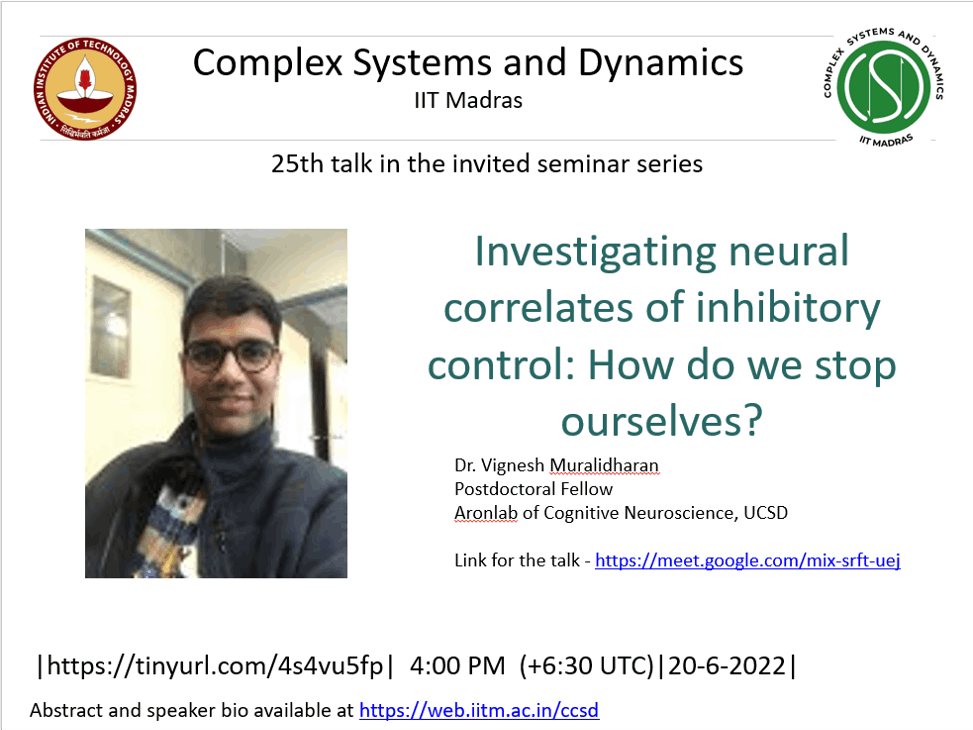30th Seminar
Study of interactions in complex systems
Dr. Subhradeep Roy
Embry-Riddle Aeronautical University, Daytona Beach Campus, USA
Abstract
Complex systems consist of many interacting components, which work in unison to accomplish a task. Animal collective behavior, the human brain, social networks, and transportation networks are a few examples of complex systems. I will demonstrate my approach to study complex systems using both analytical and experimental techniques to meet the three broad objectives:
(1) understanding the nature of interactions in real-world systems, ranging from wild bat pairs in motion to interaction among car drivers in traffic,
(2) developing techniques for quantitative analysis of real-world dataset to learn the features of such interactions, and
(3) building robust systems using analytical frameworks by adapting lessons from the real-world biological systems.
Specifically, I will present how data-driven approaches can be applied to characterize interactions with applications in traffic. I will demonstrate how research findings on pairwise interactions in bats can be used to learn about group-level behavior using agent-based models.
Speaker Bio
Dr. Subhradeep Roy received his Bachelor's and Master's degrees in Mechanical Engineering from the Indian Institute of Engineering Science and Technology, Shibpur in 2010 and the Indian Institute of Technology Kanpur in 2012, respectively, and a Ph.D. in Engineering Mechanics from Virginia Tech in 2017. From 2017-2019 he was a post-doctoral scholar in the Physical Computing Laboratory at Virginia Tech. From 2019-2021, he held a tenure-track assistant professor position in the Mechanical Engineering Department at California State University, Northridge. In Fall 2021, he joined the Mechanical Engineering Department at Embry-Riddle Aeronautical University - Daytona Beach campus, where he is currently a tenure-track assistant professor. His research interest is to study dynamical systems emerging from the natural world using an interdisciplinary approach and by collaborating with researchers from various disciplines. He directs the 'Complex Dynamical Systems Laboratory' and works on various topics, including bat swarms to vehicular traffic.









